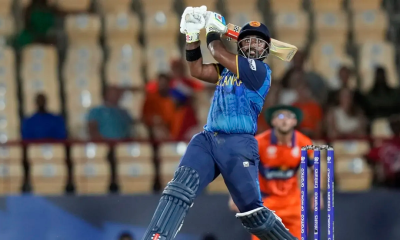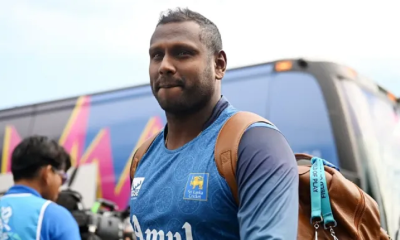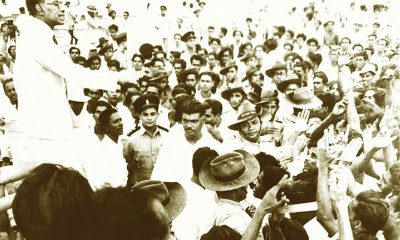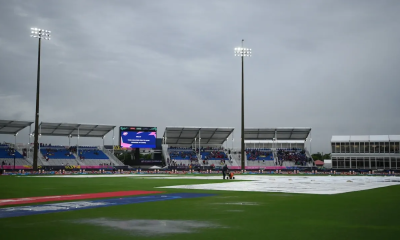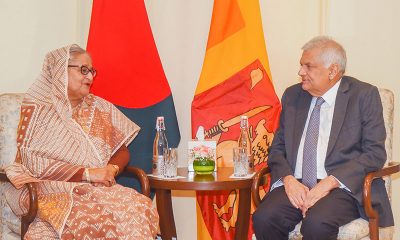Features
Proposed Penal Code amendment and threat of promotion of sexual abuse of children – II

by Kalyananda Tiranagama
Executive Director
Lawyers for Human Rights and Development
(First part of this article appeared in The Island of 09 June 2023)
The election of members for the next Human Rights Council was due to be held in May 2008. Sri Lanka was seeking re-election to the Council. A group of foreign-funded, pro-LTTE, anti-national NGOs and LGBTQ groups commenced, months before the elections, making preparations to carry on a sinister campaign to prevent Sri Lanka’s re-election to the Council. UN Human Rights Council was due to review Sri Lanka’s human rights situation in May 2008.
This review of Sri Lanka’s human rights situation was done on the basis of reports presented by the Government of Sri Lanka, UN representatives and national and international human rights NGOs. January 14, 2008 was the deadline for NGOs to send their reports to the Council. As the first step, these foreign-funded NGOs made an appeal to the UN High Commissioner for Human Rights, Louise Arbour, to extend the deadline for submission of NGO report till February 8, 2008. They conducted a series of meetings and prepared a report titled Joint Civil Society Report for Universal Periodic Review of Sri Lanka – May 2008 and presented it to the Office of the High Commissioner for Human Rights in the name of 39 organizations in Sri Lanka.
This Report had deliberately ignored the violations of human rights committed by the LTTE, including the forcible conscription of children, stating that it had focused on the Government of Sri Lanka (GOSL) as it was a member of the Human Rights Council and subject to the Universal Periodic Review process and it stated that the human rights situation in Sri Lanka had deteriorated since the country became a member of the Human Rights Council in 2006.
This Report was full of lies and distortions intended to tarnish the image of the country. Some of the blatant lies, fabrications and distortions mentioned in this Joint Civil Society Report are mentioned below:
Blatant Lies ·
The establishment of semi-legal vigilante units (so-called Civil Defence Units) terrorizes the civilian population throughout the country.
· What a blatant lie this statement is! Civil Defence Force consisting of Gramarakshakas was established to protect the villages and the people in the North and the East in the villages which were vulnerable to terrorist attacks. They were not semi-legal vigilante units. Vigilante groups like Black Cats and Yellow Cats operated during the UNP Rule, from 1988 – 1991. Civil Defence Force was a force officially created by the Government of Sri Lanka and led by Rear Admiral Sarath Weerasekera, former Deputy Chief of the Sri Lanka Navy. Where have they terrorized civilian population? Can these NGOs cite a single incident where the Civil Defence Units have terrorized civilian population?
· Torture and cruel and inhuman treatment is endemic across police stations and detention centres.
· This statement was also highly exaggerated and distorted. There was no doubt that incidents of torture were still reported against some Police Officers and there were complaints of assaults and harassment by the Police. But could one say that torture and cruel and inhuman treatment was endemic across police stations and detention centres in Sri Lanka at that time? About three decades back – during the period from 1989 – 1991 – there was a time when torture was endemic across police stations. The situation had improved much since then.
· In 1994 Torture Act was enacted making torture a criminal offence punishable with a mandatory jail sentence of seven years. In 2000 a special unit was established in the Attorney General’s Department to prosecute perpetrators of torture and since then a large number of Police Officers have been indicted in the High Courts in different areas in the country for torture and some of them were convicted and sent to jail. The Attorney General did not appear for the Police or Army Officers in Fundamental Rights Applications before the Supreme Court where there were allegations of torture. The Supreme Court has continuously taken a very serious view of torture and ordered the State and the individual police officers who were found to be responsible for torture to pay compensation to victims. The policy of zero tolerance of torture, introduced by Dr. Radhika Coomaraswamy as the Chairperson of Human Rights Commission of Sri Lanka (HRC), was continuously being followed by the HRC. The number of complaints of torture coming before the Supreme Court and the HRC had gradually decreased over the years.
· Flagrant violations of International humanitarian law including targeting of civilians, attacks on places of worship, hospitals and schools, and forced resettlement of IDPs.
· This statement was also a blatant lie. This is a Report submitted in February 2008, not after the end of the war in May, 2009. Could they cite a single incident where the GOSL has targeted civilians? They could not. There was not a single incident where the security forces have targeted civilians.
· Were there any incidents where the security forces had attacked places of worship, hospitals and schools? No. There wasn’t any. This statement is also a deliberate lie.
· There were more than a dozen incidents where the LTTE terrorists had attacked civilian targets, killing hundreds of helpless children, women and men and injuring thousands of people. LTTE had attacked several Catholic Churches in Mannar and killed a Hindu priest at Batticaloa and a Buddhist monk at Trincomalee during that period. They used Vakarai Hospital as its base for attacking security forces. When this Report talked of “targeting of civilians, attacks on places of worship, hospitals and schools” without naming the real perpetrator of these crimes – the LTTE – it has made a subtle attempt to put all these crimes committed by the LTTE to the account of the Government of Sri Lanka.
· The Report alleged that there was forced resettlement of IDPs. It is no secret that several NGOs, INGOs and UN Agencies operating in the East at that time tried to obstruct the resettlement of displaced people. They tried to dissuade people from leaving their IDP camps. They wished the IDPs to remain in IDP camps undergoing all sorts of difficulties so that they could continue with their welfare work in IDP camps and carry on their international campaign against Sri Lanka clamouring about displacement of hundreds of thousands of people by war, comparing Sri Lanka’s situation with that of Somalia.
· Women on the plantations also face forced sterilization, promoted in some cases by the management.
· This was also a diabolical lie. There was no forced sterilisation of women anywhere in the country. There had never been. There were two powerful political parties and trade unions looking after the interests of plantation workers in Sri Lanka – the Ceylon Workers’ Congress, led by Mr. Arumugam Thondamon, and the Up-Country People’s Front, led by Mr. P. Chandrasekeran. There were a large number of NGOs working among the plantation workers. There was a Plantation Trust. If there was any attempt at forced sterilization of plantation women, these organizations would not have remained silent.
· This was a sinister attempt made by these NGOs that drafted this Report to tarnish the image of the country and the government of Sri Lanka by spreading the lie that a repressive Sinhala government was forcibly sterilizing Tamil women in the plantation areas, in violation of their human rights and committing genocide.
· Acts of violence against women are growing, as are restrictions on women’s freedom of choice on a range of issues, ranging from form of dress and choice of marriage partner.
· This statement that ‘Acts of violence against women are growing’ was also contrary to facts. Domestic violence is a problem affecting not only our society, but all societies including the West. After a long consultation process with women’s organizations in the country, the Government enacted Domestic Violence Act in 2003 to deal with the problem of domestic violence. Any woman or child affected by domestic violence could obtain a protection order on application to a Magistrate’s Court. The Ministry of Child Development and Women’s Empowerment had taken a special interest in the implementation of the Domestic Violence Act. There were several organizations like the Legal Aid Commission and the Women in Need (WIN) providing counselling and legal support services to women and children affected by domestic violence. In 36 Police Divisions, there were separate Women and Children Units, manned by women Police Officers, with special training to handle cases of violence against women and children.
· Were there any restrictions on women’s freedom of choice of form of dress or choice of marriage partner in Sri Lanka, as claimed by these NGOs? Certainly not. It was a diabolical attempt made to give a gloomy picture of Sri Lanka, to depict Sri Lanka as a country like Afghanistan under a fundamentalist rule.
· LGBT (Lesbian, Gay, Bisexual and Transgender) individuals are denied access to health services, education and employment and the ability to participate in social and public life. Targeting and persecution of LGBT persons have led to several individuals leaving the country to seek asylum elsewhere.
· Was there an iota of truth in this statement? Were Lesbians and Gays denied access to health services in hospitals in Sri Lanka? Were they denied admission to hospitals, government or private, when they fall sick? Were they or their children denied admission to schools, universities or other institutions of higher education, due to the fact that they are lesbians or gays? Were they denied employment? Was there a requirement, legal or otherwise, to disclose whether a person is a homosexual? Were there any restrictions on LGBT persons’ participation in social and public life? Don’t they have voting rights? Were they not allowed to contest elections? It is a well-known fact that a number of leading politicians in this country were/are homo-sexuals or persons who maintained homo-sexual relationships.
· Since the introduction of the Penal Code by the British rulers in 1863, homo-sexual conduct remained a criminal offence in Sri Lanka. Till 1995 only gay relationships or homo-sexual conduct between men was an offence. When the Penal Code was amended in 1995, ensuring gender equality, lesbian relationship was also made a criminal offence. Whether homo-sexual conduct is criminalized or not, Asian culture considers homo-sexuality as a deviation of the normal human sexual conduct.
· As was claimed in this Report, there was no targeting and persecution of LGBT persons in Sri Lanka. No police officer was going to peep into their bedrooms. Only thing they could not promote, openly display or exhibit their conduct. There was no reason for them to leave Sri Lanka and seek asylum elsewhere unless they wished to contract same sex marriages, which they could not do in Sri Lanka.
· Equal Ground, an NGO campaigning for recognition of LGBT rights and decriminalization of homo-sexuality, was also among the NGOs involved in this campaign.
Any person who is conversant with the situation of this country knows that most of these assertions were blatant lies, half-truths, distortions and fabrications concocted by some of the leaders of these foreign funded NGOs who were hell-bent on serving the agendas of their foreign masters of getting this country opened for foreign intervention.
As the next step of their anti-Sri Lanka campaign, in April 2008, these NGOs had addressed a letter, containing packs of lies and fabrications, to the Member States of the UN General Assembly seeking their support to prevent the re-election of Sri Lanka to the Human Rights Council. In this letter, these NGOs have stated:
“We, the undersigned civil society organizations are gravely concerned by the widening human rights crisis and growing culture of impunity that cripples our country….
” … It is with deep sadness and regret that we have now decided to make this appeal to the members of the United Nations General Assembly to oppose the re-election of Sri Lanka to the Council in 2008…. During Sri Lanka’s two years tenure in the UN Human Rights Council, the human rights situation has worsened. The Government’s unwillingness to take effective measures to address and prevent violations has made clear its inability to fulfill its pledges….
“We appeal to you to consider withholding support for Sri Lanka’s re-election this year. By doing so, your government will send a strong message to the Government of Sri Lanka that it must reform its practices if it wants to continue as an equal partner in international institutions such as the UN ….
“To re-elect Sri Lanka to the Human Rights Council in the present circumstances would amount to support for the undemocratic practices that have become part of our everyday lives. Your rejection of Sri Lanka’s bid for re-election to the Human Rights Council will reaffirm the faith that Sri Lanka civil society has placed in the international community, and could act as a powerful impetus for reforms in the country.” A Sinhala translation of this letter appeared in the Ravaya newspaper of 18. 05. 2008.
Features
Electoral reform and abolishing the executive presidency
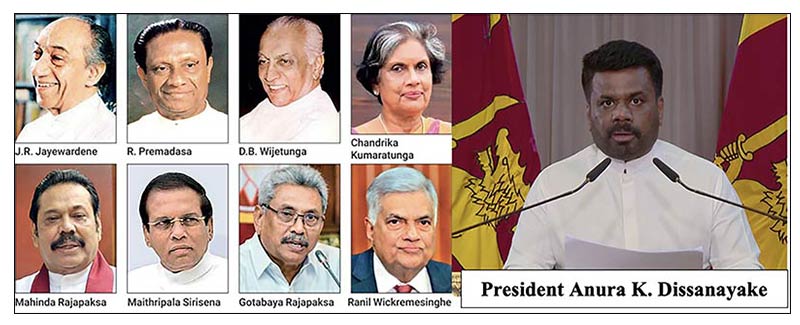
by Dr Jayampathy Wickramaratne,
President’s Counsel
The Sri Lankan Left spearheaded the campaign against introducing the executive presidency and consistently agitated for its abolition. Abolition was a central plank of the platform of the National People’s Power (NPP) at the 2024 presidential elections and of the Janatha Vimukthi Peramuna (JVP) at all previous elections.
Issues under FPP or a mixed system
President Anura Kumara Dissanayake, participating in the ‘Satana’ programme on Sirasa TV, recently reiterated the NPP’s commitment to abolition and raised four issues related to accompanying electoral reform.
The first is that proportional representation (PR) did not, except in a few instances, give the ruling party a clear majority, resulting in a ‘weak parliament’. Therefore, electoral reform is essential when changing to a parliamentary form of government.
Secondly, ensuring that different shades of opinion and communities are proportionally represented may be challenging under the first-past-the-post system (FPP). For example, as the Muslim community in the Kurunegala district is dispersed, a Muslim-majority electorate will be impossible. Under PR, such representation is possible, as happened in 2024, with many Muslims voting for the NPP and its Muslim candidate.
The third issue is a difficulty that might arise under a mixed (FPP-PR) system. For example, the Trincomalee district returned Sinhala, Tamil and Muslim candidates at successive elections. In a mixed system, territorial constituencies would be fewer and ensuring representation would be difficult. For the unversed, there were 160 electorates that returned 168 members under FPP at the 1977 Parliamentary elections.
The fourth is that certain castes may not be represented under a new system. He cited the Galle district where some of the ‘old’ electorates had been created to facilitate such representation.
It might straightaway be said that all four issues raised by President Dissanayake have substantial validity. However, as the writer will endeavour to show, they do not present unsurmountable obstacles.
Proposals for reform, Constitutional Assembly 2016-18
Proposals made by the Steering Committee of the Constitutional Assembly of the 2015 Parliament and views of parties may be referred to.
The Committee proposed a 233-member First Chamber of Parliament elected under a Mixed-Member Proportional (MMP) system that seeks to ensure proportionality in the final allocation of seats. 140 seats (60%) will be filled by FPP. The Delimitation Commission may create dual-member constituencies and smaller constituencies to render possible the representation of communities of interest, whether racial, religious or otherwise. 93 compensatory seats (40%) will be filled to ensure proportionality. Of these, 76 will be filled by PR at the provincial level and 12 by PR at the national level, while the remaining 5 seats will go to the party that secures the highest number of votes nationally.
The Sri Lanka Freedom Party agreed with the proposals in principle, while the Joint Opposition (the precursor of the Sri Lanka Podujana Peramuna) did not make any specific proposals. The Tamil Nationalist Alliance was willing to consider any agreement between the two main parties on the main principles in the interest of reaching an acceptable consensus.
The Jathika Hela Urumaya’s position was interesting. If the presidential powers are to be reduced, the party obtaining the highest number of votes should have a majority of seats. Still, the representation of minor political parties should be assured. Therefore, the number of seats added to the winning party should be at the expense of the party placed second.
The All Ceylon Makkal Congress, Eelam People’s Democratic Party, Sri Lanka Muslim Congress and the Tamil Progressive Alliance jointly proposed that the principles of the existing PR system be retained but with elections being held for 40 to 50 electoral zones and a 2% cut-off point. The Janatha Vimukthi Peramuna was for the abolition of the executive presidency and, interestingly, suggested a mixed electoral system that ensures that the final outcome is proportional.
CDRL proposals
The Collective for Democracy and Rule of Law (CDRL), a group of professionals and academics that included the writer, made detailed proposals on constitutional reform in 2024. It proposed returning to parliamentary government. The legislature would be bicameral, with a House of Representatives of 200 members elected as follows: 130 members will be elected from territorial constituencies, including multi-member and smaller constituencies carved out to facilitate the representation of social groups of shared interest; Sixty members will be elected based on PR at a national or provincial level; Ten seats would be filled through national-level PR from among parties that failed to secure a seat through territorial constituencies or the sixty seats mentioned above, enabling small parties with significant national presence without local concentration to secure representation. Appropriate provisions shall be made to ensure adequate representation of women, youth and underrepresented interest groups.
The writer’s proposal
The people have elected the NPP leader as President and given the party a two-thirds majority in Parliament. It is, therefore, prudent to propose a system that addresses the concerns expressed by the President. Otherwise, we will be going around in circles. The writer believes that the CDRL proposals, suitably modified, present a suitable basis for further discussion.
While the people vehemently oppose any increase in the number of MPs, it would be challenging to address the President’s concerns in a smaller parliament. The writer’s proposal is, therefore, to work within a 225-member Parliament.
The writer proposes that 150 MPs be elected through FPP and 65 through national PR. 10 seats would be filled through national-level PR from among parties that have not secured a seat either through territorial constituencies or the 65 seats mentioned above. The Delimitation Commission shall apportion 150 members among the various provinces proportionally according to the number of registered voters in each province. The Commission will then divide each province into territorial constituencies that will return the number of MPs apportioned. The Commission may create smaller constituencies or multi-member constituencies to render possible the representation of social groups of shared interest.
The 65 PR seats will be proportionally distributed according to the votes received by parties nationally, without a cut-off point. The number of ‘PR MPs’ that a party gets will be apportioned among the various provinces in proportion to the votes received in the provinces. For example, if Party A is entitled to 10 PR seats and has obtained 20% of its total vote from the Central Province, it will fill 2 PR seats from candidates from that Province, and so on. Each party shall submit names of potential ‘PR MPs’ from each of the provinces where the party contests at least one constituency in the order of its preference, and seats allotted to that party in a given province are filled accordingly. The remaining 10 seats will be filled by small parties as proposed by the CDRL.
How does the proposed system address President Dissanayake’s concerns?
The President’s concern that PR will result in a weak parliament is sufficiently addressed when a majority of MPs are elected under FPP.
Before dealing with the other three issues, it must be said that voters do not always vote for candidates from their communities. A classic example is the 1965 election result in Balapitiya, a Left-oriented constituency dominated by a particular caste. The Lanka Sama Samaja Party boldly nominated L.C. de Silva, from a different caste, to contest Lakshman de Silva, a long-standing MP who crossed over to bring down the SLFP-LSSP coalition. Balapitiya voters punished Lakshman and elected L.C.
Multi-member constituencies have generally served their purpose but not always. The Batticaloa dual-member constituency had been created to ‘render possible’ the election of a Tamil and a Muslim. At the 1970 elections, the four leading candidates were Rajadurai of the Federal Party, Makan Markar of the UNP, Rahuman of the SLFP and the independent Selvanayagam. The Muslim vote was closely split between Macan Markar and Rahuman, resulting in both losing. Muslim voters surely knew that a split might deny Muslim representation but preferred to vote according to their political convictions.
The President’s second concern that a dispersed community may not get representation under FPP will also be addressed better under the proposed system. Taking the same Kurunegala district as an example, a party could attract Muslim voters by placing a Muslim high up on the PR list. Similarly, a Tamil party could place a candidate from a depressed community high up in its Northern Province PR list to attract voters of depressed communities and ensure their representation.
The third concern was that the number of electorates would be less under a mixed system, making it challenging to carve out electorates to facilitate the representation of communities, the Trincomalee district being an example. Empowering the Delimitation Commission to create smaller electorates assuages this concern. It will not be Trincomalee District but the whole Eastern Province to which a certain number of FPP MPs will be allotted, giving the Commission broad discretion to carve out electorates. The Commission could also create multimember constituencies to render possible the representation of communities of interest. The fourth concern about caste representation would also be addressed similarly.
It may be noted that the difference between the number of FPP MPs (150) under the proposed system is only 10% less than that under the delimitation of 1975 (168). Also, there will be no cut-off point for PR as against the present cut-off of 5%. This will help small as well as not-so-small parties. Reserving 10 seats for small parties also helps address the concerns of the President.
No spoilers, please. Don’t let electoral reform be an excuse for a Nokerena Wedakama
The writer submits the above proposals as a basis for discussion. While a stable government and the representation of various interests are essential, abolishing the dreaded Executive Presidency is equally important. These are not mutually exclusive.
President Dissanayake also said on Sirasa TV that once the local elections are over, the NPP would first discuss the issue internally. This is welcome as there would be a government position, which can be the basis for further discussion.
This is the first time a single political party committed to abolition has won a two-thirds majority. Another such opportunity will almost certainly not come. Let there be no spoilers from either side. Let electoral reform not be an excuse for retaining the Executive Presidency. Let the Sinhala saying ‘nokerena veda kamata konduru thel hath pattayakuth thava tikakuth onalu’ not apply to this exercise (‘for the doctoring that will never come off, seven measures and a little more, of the oil of eye-flies are required’—translation by John M. Senaveratne, Dictionary of Proverbs of the Sinhalese, 1936).
According to recent determinations of the Supreme Court, a change to a parliamentary form of government requires the People’s approval at a referendum. While the NPP has a two-thirds majority, it should not take for granted a victory at a referendum held late in the term of Parliament for, then, there is the danger of a referendum becoming a referendum on the government’s performance rather than one on the constitutional bill, with opposition parties playing spoilers. If the government wishes to have the present form of government for, say, four years, it could now move a bill for abolition with a sunset clause that provides for abolition on a specified date. Delay will undoubtedly frustrate the process and open the government to the accusation that it indulged in a ‘nokerena vedakama’.
Features
Did Rani miss manorani ?
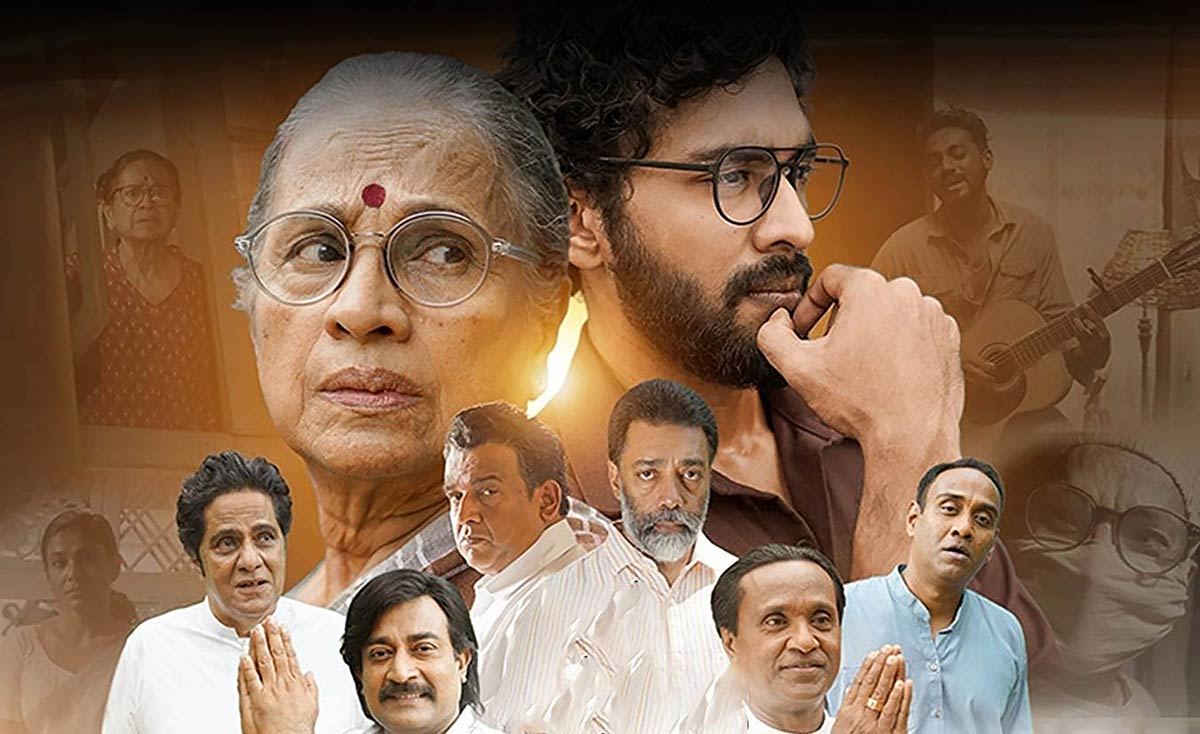
(A film that avoids the ‘Mannerism’ of a Biopic: Rani)
by Bhagya Rajapakshe
bhagya8282@gmail.com
This is only how Manorani sees Richard. It doesn’t have a lot of what Richard did. Although Manorani is not someone who pays attention to the happenings in the country. It was only after her son was kidnapped that she began to feel that this was happening in the country.She had human emotions. But she was a person who smoked cigarettes and drank whiskey and lived a merry life.”
(Interview with “Rani” film director Ashoka Handagama by Upali Amarasinghe – 02.02.2025 ‘Anidda’ weekend newspaper, pages 15 and 19)
The above statement shows the key attitude of the director of the movie, “Rani” towards the central character of the film, Dr. Manorani Sarawanamuttu. This statement is highly controversial. Similarly, the statement given by the director to Groundviews on 30.01.2025 about capturing the depth of Rani’s character shows that he has done so superficially, frivolously?
A biopic is a specific genre of cinema. This genre presents true events in the life of a person (a biography), or a group of people who are currently alive or who belong to history with recognisable names. The biopic genre often artistically and cinematically explores keenly the main character along with a few secondary characters connected to the central figure. World cinema is proof that even if the characters are centuries old, they are carefully researched and skilled directors take care to weave the biographies into their films without causing any harm or injustice to the original character.
According to the available authentic reports, Manorani Saravanamuthu was a professionally responsible medical doctor. Chandri Peiris, a close friend of her family, in his feature article on Manorani in the ‘Daily Mirror’ newspaper on 06th November 2021, says this about her:
“She was a doctor who had her surgeries in the poorest areas around Colombo which made her popular with communities who preferred their women to be seen by female doctors. She had a wonderful manner with her patients which my mother described by saying, ‘looking at her is enough to make you well …. When it came to our outlandish group of friends, she was always there to steer many of us through some very personal issues such as: unplanned pregnancies, teenage pregnancies, mental breakdowns, STD’s, young lovers who ran away and married, depression, circumcisions, break-ups, fractures, dance injuries, laryngitis (especially among the actors and singers) fevers, pimples, and even the odd boil on the bum.”
But the image of Rani depicted by Handagama in his film is completely different from this. According to the film, a major feature of her life consisted of drinking whiskey and smoking cigarettes. Her true role is unspoken, hidden in the film. A grave question arises as to whether the director spent adequate time doing the research? to find out who Manorani really was. In his article Chandri Peiris further says the following about Manorani:
“Soon after the race riots in 1983, Manorani (along with Richard) helped a great many Sri Lankan Tamils to find refuge in countries all over the world. Nobody knew about this. But all of us who used to hang around their house kept seeing unfamiliar people come over to stay a few days and then leave. Among them were the three sons of the Master-in-Charge of Drama at S. Thomas’ College, who were swiftly sent abroad by the tireless efforts of this mother and son. It was then that we worked out that their home was a safehouse. … Manorani was vehemently opposed to the terror wreaked by the LTTE and always wanted Sri Lanka to be one country that was home to the many diverse cultures within it. When the ethnic strife developed into a full-on war with those who wanted to create a separate state for Tamil Eelam, she remained completely against it.”
According to the director of the film, if Rani had no awareness of what was happening in the country and the world, how could she have helped the victims survive and leave the country during that life-threatening period? It is clear from all this that the director has failed to fully study the character of Manorani and what she did. There is a scene where Manorani watches a Sinhala stage play with much annoyance and on her way back home with Richard, she is shown insensitively avoiding Richard’s friend Gayan being assaulted by a mob. This demeanour does not match the actual reports and information published about Manorani. How did the director miss these records? It shows his indifference to researching background information for a film such as this. He clearly does not think that research is essential for a sharp-witted artist in creating his artwork. In his own words, he told the Anidda newspaper:
“But the information related to this is in the public domain and the challenge I had was to interpret that information in the way I wanted. I am not an investigative journalist; My job is to create a work of art. That difference should be understood and made.”
And according to the director, “I was invited to do the film in 2023. The script was written within two to three months and the shooting was planned quickly.” Thus, it is clear that there has been no time to study the inner details related to Manorani, the main character of the film, or the character’s Mannerism. Professor Sarath Chandrajeewa, who published a book with two critical reviews on Handagama’s previous film ‘Alborada’, emphasises in both, that ‘Alborada’ also became weak due to the lack of proper research work’ (Lamentation of the Dawn (2022), pages 46-57).
Directors working in the biopic genre with a degree of seriousness consider it their responsibility to study deeply and construct the ‘mannerism’ of such central characters to create a superior biographical film. For example, in Kabir Khan’s 2021 film ’83’ the actor Tahir Raj Bhasin, who played the role of Sunil Gavaskar, said that it took him six months to study Sunil Gavaskar’s unique style characteristics or Mannerism.
Also, Austin Butler, the actor who played the role of Elvis Presley in the movie ‘Elvis’ directed by Buz Luhrmann and released in 2022, said in a news conference: After he started studying the character of Elvis, he became obsessed with the character, without meeting or talking to his family for nearly one year, while making the film in Australia before, during Covid and after.
‘Oppenheimer’ (2023) was written and directed by Christopher Nolan, in which Cillian Murphy plays the role of Oppenheimer. Nolan read and studied the 700-page story about Oppenheimer called ‘American Prometheus’ . It is said that it took three months to write the script and 57 days for shooting, and finally a two-hour film was created. The rejection of such intense studies by our filmmakers will determine the future of cinema in this country.
Acting is the prime aspect of a movie. The character of Manorani is performed very skillfully in the movie. But certain of her characteristics and mannerism become repetitive and in their very repetitiveness become tiresome to watch. For example, right across the film Manorani is shown smoking, drinking alcohol, sitting and thinking, going towards a window and thinking and smoking again. It would have been better if it had been edited. The audience is thereby given the impression that Manorani lives on cigarettes and whiskey. Although smoking and drinking alcohol is a common practice among some women of Manorani’s social class, it is depicted in the film so repetitively that it creates a sense of revulsion in the viewer. In the absence of close-ups and a play of light and dark, Manorani’s mental states cannot be seen in their intense three dimensionality. It is a question whether the director gave up directing and let the actress play the role of Manorani as she wished. At the beginning of the film, close-ups of Manorani appear with the titles but gradually become normal camera angles in the film. This avoids the use of close-ups of Manorani’s face to show emotion in the most shocking moments in the film. Below are some films that demonstrate this cinematic technique well.
‘Three Colours: Blue’ (1993) French, Directed by Kryzysztof Kies’lowski.
‘Memories in March’
(2010) Indian, Directed by Sanjoy Nag.
‘Manchester by the Sea’
(2016) English, Directed by Keneth Lonergan.
‘Collateral Beauty’
2016) English, Directed by David Frankel.
Certain characters appear in the film without any contribution to building Manorani’s role. Certain scenes such as the Television news, bomb explosions, dialogue scenes where certain characters interview Manorani are not integrated into the film’s narrative and feel forced. The scene with the group of hooligans in a jeep at the end of the film is like a strange tail to the film.
Richard’s sexual orientation, which is hinted at the end of the film by these thugs in the final scene, is an insult to him. It is a great disrespect to those characters to present facts without strong information analysis and to tell the inner life of those characters while presenting a real character through an artwork with real names. The director should not have done such humour and humiliation.
There is some thrill in seeing actors who resemble the main political personalities of that era playing those roles in the film. In this the film has more of a documentary than a fictional quality but it barely marks the socio-political history of this country during the period of terror in 88-89. The character of Manorani was created as a person floating in that history ungrounded, without a sense of gravity.
The film’s music and vocals are mesmerising. But unfortunately, the song ‘Puthune’ (Dearest Son), which has a very strong lyrical composition, melody and singing, is placed at the end of the film, so the audience does not know its strength. This is because the audience starts to leave the cinema as soon as the song starts, when the closing credits scrolled down. If the song had accompanied the scene on the beach where we see Manorani for the last time, the audience would have felt its strength.
Manorani’s true personality was a unique blend of charm, sensitivity, compassion, intelligence, warmth and fun, which enhanced her overall beauty, as evidenced by various written accounts of her. Art critics and historians H. W. Johnson and Anthony F. A Johnson state in their book ‘History of Art’ (2001), “Every work of art tells whether it is artistic or not. And the grammar and structure of the form will signal to us that.”
Features
Precautionary methods; cooked up insults
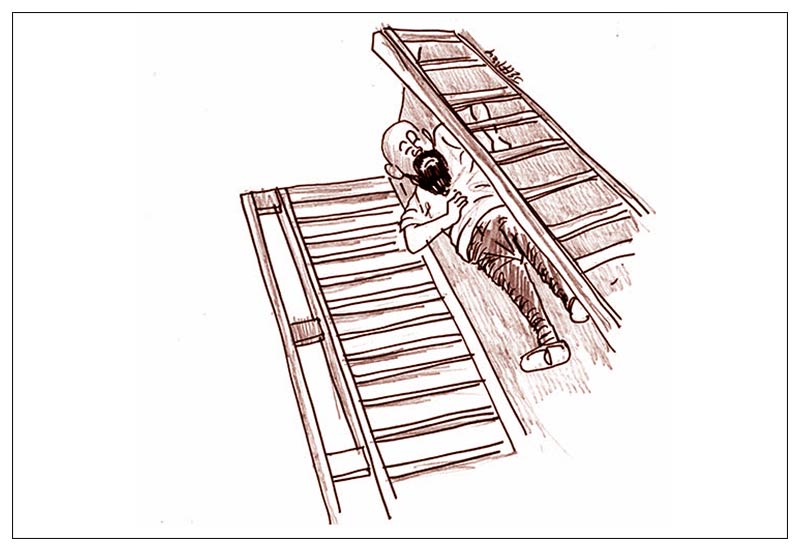
 Topic of the moment is security and its major subsection public security and the country’s security. The police admitted it had lapsed in the tightness of its security when drug kingpin Ganemulla Sanjeeva was shot point blank in the dock at the Colombo Magistrate’s Court. The police however were very speedy in the apprehension of the shooter and several accomplices. The crime was meticulously planned and carried out with a gun smuggled into the court in a hollowed-out book.
Topic of the moment is security and its major subsection public security and the country’s security. The police admitted it had lapsed in the tightness of its security when drug kingpin Ganemulla Sanjeeva was shot point blank in the dock at the Colombo Magistrate’s Court. The police however were very speedy in the apprehension of the shooter and several accomplices. The crime was meticulously planned and carried out with a gun smuggled into the court in a hollowed-out book.
The murder of a lawbreaker as he rode his motorbike with two of his children was another episode in the recent spate of druggies battling it out among themselves and hiring gunmen to do the dirty. Sympathy is all for those two innocent kids who died in the attack.
Then Yukthiya, now competent sleuthing and hard work
Cassandra’s take on this recent heightened gang violence is that the big sharks were apprehended by the police or are about to be and so they, suspecting co-drug gangsters of ratting to law enforcement officers, engage in their killing sprees. And, here is a significant theory of hers: the police and CID are actually doing what they are supposed to do: catch wrongdoers, with no interference from politicians, the new government being such.
Remembered well is project Yukthiya, announced with fanfare by the Minister of Security in Ranil W’s SLPP government – Tiran Alles; seconded by acting IGP Deshabandu Tennakoon, that the drug menace in Sri Lanka would be wiped out. We expected at least one drug lord to be apprehended. No, the police, almost on the rampage, caught very many kuunissas and haalmessas who had a packet of drugs in the pocket, or a woman with a small parcel hidden in her roof. The thalmahas jeering loudly continued to luxuriously lord it in Dubai and other places directing sale of their drugs and murders back home. Cass was sure, in her extravagantly suspicious mind, they paid much to continue living free. Don’t ask her where this sort of kappan went – to which pocket/s.
Very different now. No fanfare, no extravagant promises, no bribe taking. Strong man at head to whom justice, fair play and each-man-does-his-duty are policies followed. More drug lords have been apprehended and extradited to SL in the past couple of months than the two years of Yukthiya. A farce.
But all sensible, concerned Sri Lankans will agree that tighter and extremely competent security must be given to the Prez, PM, Ministers and more so those connected to law, order and being spokesmen for the government; judges and VVIPs in other departments.
The President and the Prime Minister especially must curtail their appearances in public for at least a short while and walkabouts and too close contact with crowds must be taboo. Times are bad for them, not the people of the land as a whole. There definitely are persons who will not blink an eyelid in doubt or hesitation to murder a VVIP in this government and cause chaos in a land that is slowly being led to economic stability and social peace. Yes, Cassandra of today cries like her ancestor but a slightly different tune: “I do NOT want to see blood.
Too much has already been shed: thousands of Lankan youth, police officers; Richard, Lasantha, Wasim Thajudeen and many farmers made suicidal with ban of chemical fertilisers. We have gone through too many hells on earth: uprisings of 1971 and 1989; the LTTE and war; killing of those who were believed to pose competition to a strong man of two to three decades ago. We are at long last on the brink of stability and peace. Long cry but from a sincere and sensible heart, echoing very many others.
A dirty distortion
Let’s go overseas, since our collective blood pressure has risen with the first part of this Cry. Cass got a video clip on her mobile phone with the message: “Very sad to watch”. The scene is purportedly of the end of the inauguration of Trump as 47th US President on Monday January 20, 2025. On the last step stands Trump, slightly back his wife in that sort of black bowler hat that covered her entire forehead, Biden and very close to him, his wife Jill. “He looks absolutely pathetic as age really caught up.” The video rolls on.
Biden: Er, and now what?
Jill (sharply); We get in the helicopter.
Biden: And what is a helicopter?
Trump (Strong voice): It’s a thing that goes like this. Don’t worry Joe. It will take you across the blue American sky and safely to your home.
It is too stupid and sad to report verbatim.
Biden asks where his home is. Then Trump says your wife will look after you. Biden says; Housewife, first lady of my heart. He is even made to implore: Why have I to leave?
The moment Cass heard the short conversation, she threw her phone away. Why allow such trash? Such a conversation never would have occurred since Biden had just before proclaimed some regulations and. though he made a faux pas or to in what he said and did, he definitely was not senile and childish as the video shows. Such fake videos can easily be created.
The short acts or humour our people create are so sophisticated and usually not cheap and mean. Of course, that brings to mind that a parody or statement with slightly different emphasis or connotation killed a superbly talented young man in the most gruesome manner. During R Premadasa’s presidency a complimentary placard appeared pasted all over. If Cass recollects correctly the wording went thus: Who is he? What is he doing? Richard de Zoysa borrowed it and gave it a slight twist in connotation. He was tortured, killed and dropped in the sea to disappear forever. The compassionate waves washed him ashore, at least so his mother could see her beloved son, cold, dead and gone forever, but to be buried and not merely lost at sea. Bereaved women of the land who had their men disappearing were helped by her. They banded together so their pleas rose high and were heard overseas.
May such cruel and unjust times never visit us again. Tourists of all types and writers from foreign lands praise our land for its glorious beauty and variety and us the people as friendly and now serene. Let it remain so and our land gain in stability, serenity and serendipity.
-

 Business5 days ago
Business5 days agoSri Lanka’s 1st Culinary Studio opened by The Hungryislander
-
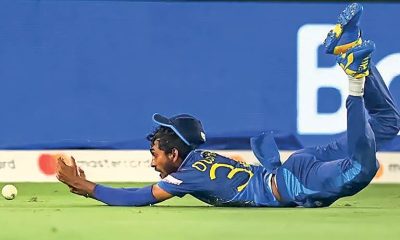
 Sports6 days ago
Sports6 days agoHow Sri Lanka fumbled their Champions Trophy spot
-
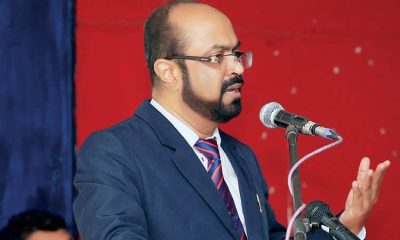
 News7 days ago
News7 days agoSC notices Power Minister and several others over FR petition alleging govt. set to incur loss exceeding Rs 3bn due to irregular tender
-
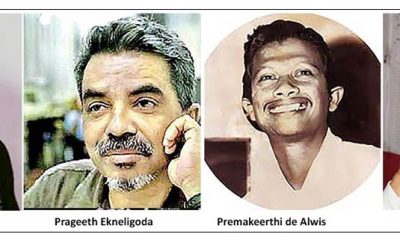
 Features6 days ago
Features6 days agoThe Murder of a Journalist
-
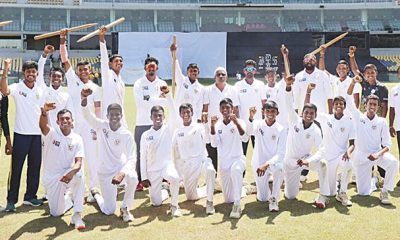
 Sports6 days ago
Sports6 days agoMahinda earn long awaited Tier ‘A’ promotion
-
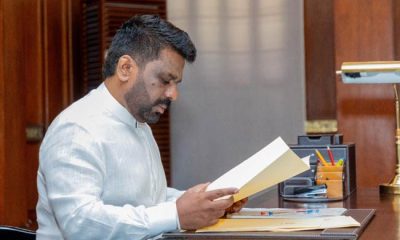
 Features6 days ago
Features6 days agoExcellent Budget by AKD, NPP Inexperience is the Government’s Enemy
-

 News7 days ago
News7 days agoMobile number portability to be introduced in June
-
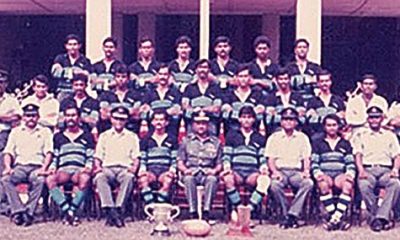
 Sports5 days ago
Sports5 days agoAir Force Rugby on the path to its glorious past


